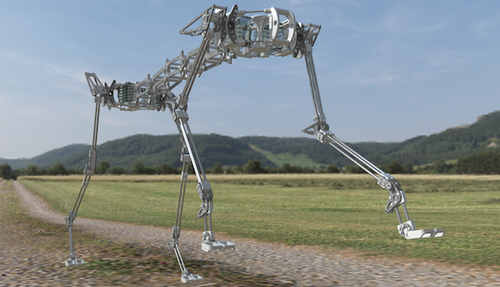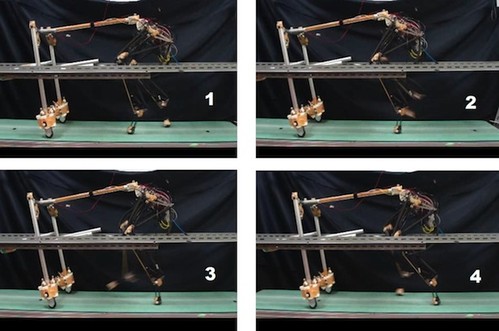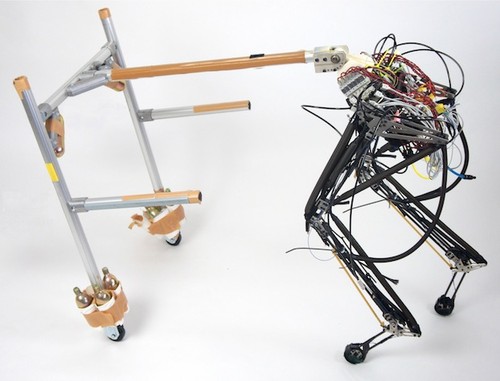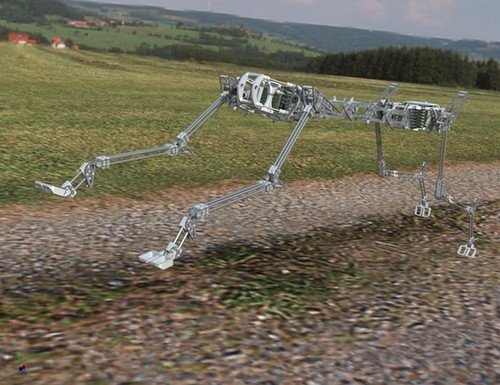A Legged Robot With Pneumatic Artificial Muscles (+VIDEO)

Aiming to reverse engineering the anatomical construction of the felines, a team from the Osaka University’s Graduate School of Information Science and Technology has designed a quick legged robot, Pneupard. The primary means of movement of a new biomimetic platform are pneumatic artificial muscles made from a rubber tube sheathed in nylon, but they contract much like the real thing when filled with air. A lifelike movement can be achieved due to the muscle contractions, combined with limbs that accurately replicate the length, forces, and range of motion of a real cat. The project leader, Andre Rosendo, claims that each hind limb features eight active muscles, and the fore limbs will have six muscles; besides the spine will also have muscles reponsible for flexion and extension. Researchers hope to find out soon, how felines surpass in so many different areas in locomotion and to apply the knowledge to future robots.
Via:spectrum.ieee.org



| Tweet |











